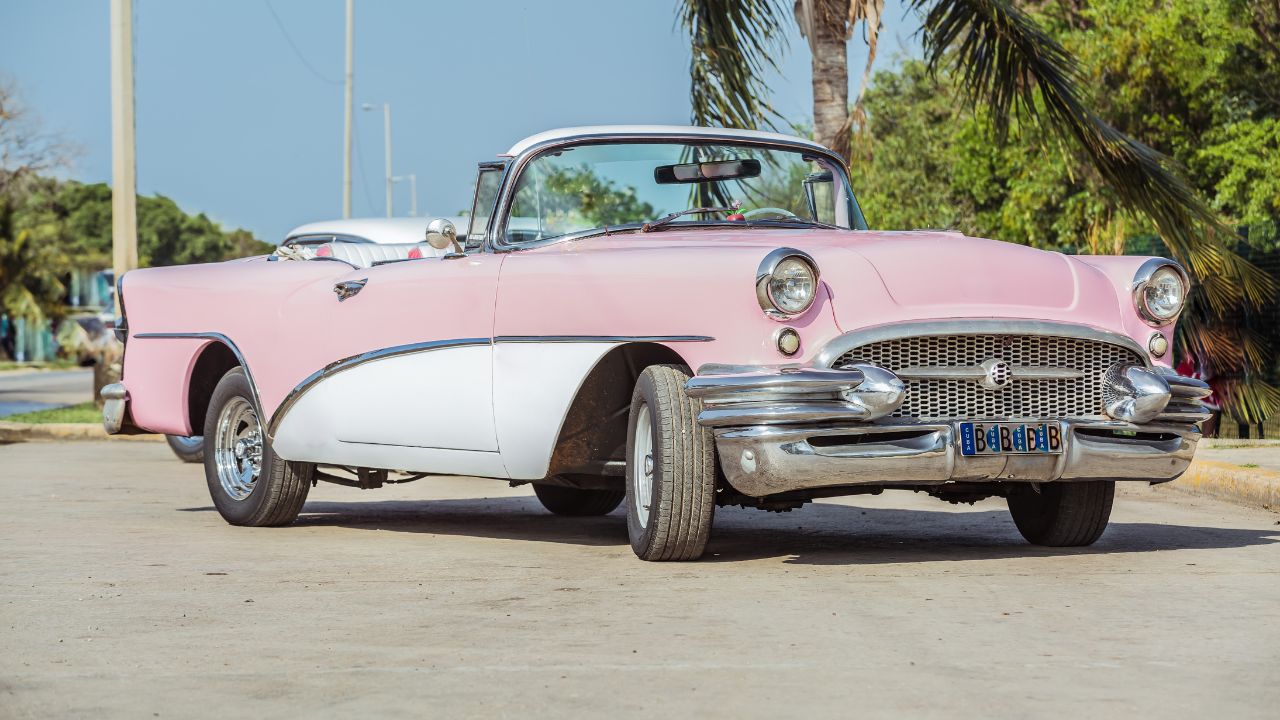
If you are considering purchasing a classic or antique car, you should know that they are older than their antique counterparts. The only difference between them is their modification, which causes them to lose some of the value. For vintage cars to retain their value, they need special insurance. Find out what classic and antique cars have in common. Here are some of the differences. Also, remember that vintage cars tend to be rarer than antique ones.
Vintage cars are usually older than antique cars
Many organizations classify automobiles manufactured between 1919-1930 as vintage. These cars have been around for over forty years and are very sought-after because they lack modern conveniences. Popular vintage models include the 1929 Hudson 7 Roadster or the 1920 Rolls Royce Phantom Limousine. They are beloved for their distinctive looks, retro driving experience and historical status. They are older than antique cars but not antique-like.
The age of the car is a determining factor in defining a vintage vehicle, but not all cars are vintage. Different groups have different definitions about what makes a car vintage. Some define antique cars as having at least 20 years of age, while others place the cutoff at 1925. It doesn't necessarily mean that the car has had any changes in its past. These distinctions are vital because they assist buyers in deciding how much to spend for a vintage vehicle.

They can be modified
While the terms "classic" and "antique" are often used interchangeably, there are differences between the two. Although some classifications may overlap, they remain distinct. The main difference is the age. These classifications can affect many aspects of owning or driving a car, such as the registration and insurance rates. Each state has its own rules regarding titling and registration. To buy an antique car from Texas, for example you'll need to pass a safety inspection, comply with emission regulations, and pay sales taxes.
It is not uncommon for vintage and antique vehicles to overlap. While both terms are used interchangeably, the cutoff year for classic cars varies by state and car insurance old car company. These are vehicles made between 1919 and 1930. However, many people consider 1925 the cutoff date. Many modified cars are still considered classic, even street-rod or customized models. Exotic cars can also be considered vintage.
Modifying them will cause their value to drop
Although many car owners would like to customize their cars, modifications to vehicles can actually decrease their value. While modifications are considered "customizing", they are not a good investment. It is unlikely that someone will pay full price for any modifications to their car. Don't expect to receive your money back if you decide to sell the car. The parts will likely lose their value once you try and resell them.
They need special insurance
The type of car and insurance required for it will determine the level of coverage. While most insurers provide coverage for antique and classic cars, some are restricted to special car shows and auto club events. Some insurers require you to keep the vehicle in an enclosed place. Others require you to maintain a clean driving record. You should make sure you have the right type of insurance for your antique or classic vehicle. Below are some considerations to consider.

Special coverage will be required for restoration of antique and classic cars. Classic and antique cars are frequently considered antique. To be eligible for coverage, they must be in near-factory condition. Some providers will offer coverage for cars that are under restoration, though. Eligibility is determined by the car's value. Car insurance companies may require that the car is at least 25years-old. In order to determine whether the vehicle meets insurance requirements, insurance companies will request photographs of high-quality restoration.
FAQ
How long does an automotive course take?
A three-year course in automotive is required.
The first year focuses on theory and learning about cars. The second year is dedicated to practical training, where you will learn how to fix cars, drive them, and do other jobs around the car. The last year of your training is spent on practical training, where you learn how to fix real-world problems.
How long does a good mechanic take?
Expert mechanics take years of practice and extensive experience. Working under the guidance of a professional mechanic is the best way to learn how repair cars.
You'll have to spend time at a garage learning all you can about cars and mechanics. It is important to get familiar with the mechanics of cars and engineering.
Additionally, you will need to attend an auto school.
It is important to get started early. To learn about automotive technology, don't wait to be older. Start studying automotive technology now to become a mechanic.
What are the requirements of an auto technician?
You must have completed high school or GED with good grades in maths and English. Additionally, you will need to be proficient in reading and writing. You will need to pass a written test and then go through a series of practical exams before being allowed to start work.
Statistics
- According to the BLS, the median annual salary for automotive service technicians and mechanics in the United States was $44,050 in May 2020. (uti.edu)
- There were 749,900 jobs available for automotive service technicians and mechanics in 2016, which is expected to grow by six percent through 2026. (jobhero.com)
- Apprentice mechanics earn significantly less hourly than mechanics who have completed training, with a median wage of approximately $14.50 an hour, according to PayScale. (jobhero.com)
External Links
How To
How to diagnose your vehicle properly for repair
You should first examine the symptoms your car is showing to determine if it requires repairs. These steps will help you diagnose your car properly.
-
Check engine lights. You should inspect the dashboard lights, such as the engine light indicator and the oil pressure gauge. Also, check the battery light indicator. If any of these indicators have been flashing continuously for several days it could mean that there is something wrong with your vehicle.
-
Examine the treads of the tires. Tires with worn treads could cause problems when handling or braking. You should inspect the treads on your wheel. You should ensure that they are clean and smooth. It is best to take off the wheels and remove them. Use a flashlight to see how well the treads are worn.
-
Pay attention to the level of your brake fluid. You must always monitor the level of your brake fluid. This ensures that your brakes work properly. Low brake fluid levels can cause brake failure when you apply pressure.
-
The suspension system should be tested. The suspension system in vehicles absorbs vibrations and shocks. It provides better control and allows smoother acceleration and deceleration. It might feel uncontrollable or wobbly if your vehicle is suffering from a suspension problem. To test whether your vehicle has a suspension issue, try putting weight on the front or rear axle and observe the movement.
-
Examine the steering column. Steering columns connect the steering wheels to other parts of the vehicle. Sometimes, steering columns are damaged by accidents. It is recommended to replace any steering column that feels loose, or shakey.
-
Observe the exhaust pipe. The exhaust pipes are responsible for moving gases from the combustion chamber into the atmosphere. You can let harmful fumes into your home if your exhaust pipes crack or leak. Also, if your tailpipe is bent, you should fix it immediately.
-
Check under the hood. Check under your hood for any unusual or missing components. There could be fluid leaking from your engine. Also, professional technicians should be called if you detect an unusual smell coming out of your engine compartment.
-
You should inspect your air filter. The vehicle's outside environment may cause the air filter to collect dust and debris. Your vehicle will run less well if it has a dirty filter. Replace your air filter regularly.
-
Check the fan belt. Your vehicle's fanbel connects the engine and transmission. If the fan belt is damaged, the engine won’t turn. The process of replacing the belt is straightforward. All you need are a screwdriver & pliers.
-
Make sure you inspect the radiator hoses and hoses. The radiator hose is used to carry water from the radiator to your engine. If the hose becomes damaged or cracked, hot liquid can be emitted onto the engine. To repair the leaky hose, all you need is a pair if needle-nosepliers.
-
The windshield wipers should be checked. Windshield wipers use electricity for snow and rain removal. If they stop working they could leave streaks behind on your window glass. The solution is to change the washer fluid.
-
Make sure you check the cables. Your car's electrical system is powered by batteries. If you are replacing batteries, disconnect the negative cord first. Failure to do so can damage your alternator.
-
Pay attention to your headlights. Headlights are used to illuminate the road ahead. They can make it difficult to see if they stop working. Check the bulbs to see if they've burned out.
-
Always check your lights. You can warn other drivers if you approach them at night. It could cause distraction and even lead to an accident if it doesn't work.
-
Check the brakes. Before you get in a car accident, your brakes will be slowing down your vehicle. If the brakes fail to work correctly, your car could lose control and collide with another vehicle.
-
Change your oil. The oilkeeps your engine lubricated. It helps keep metal parts from getting too worn down. It is recommended that you change your oil at least once per month.